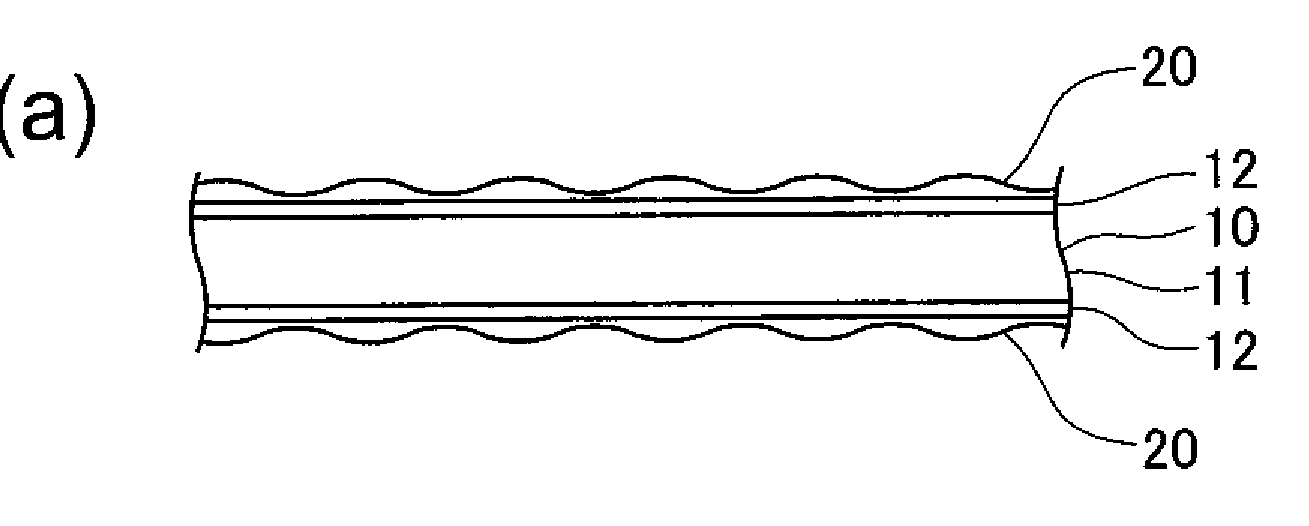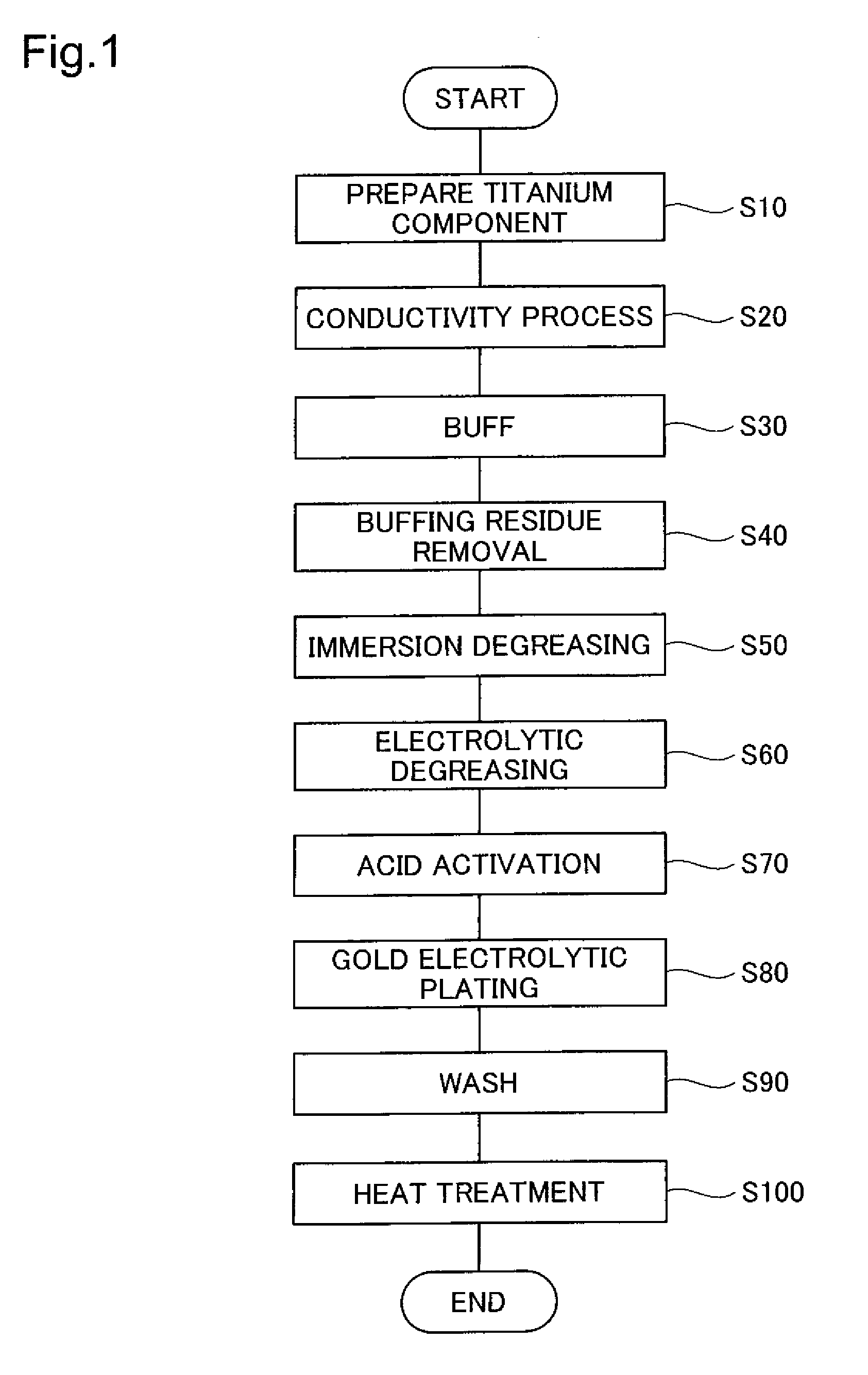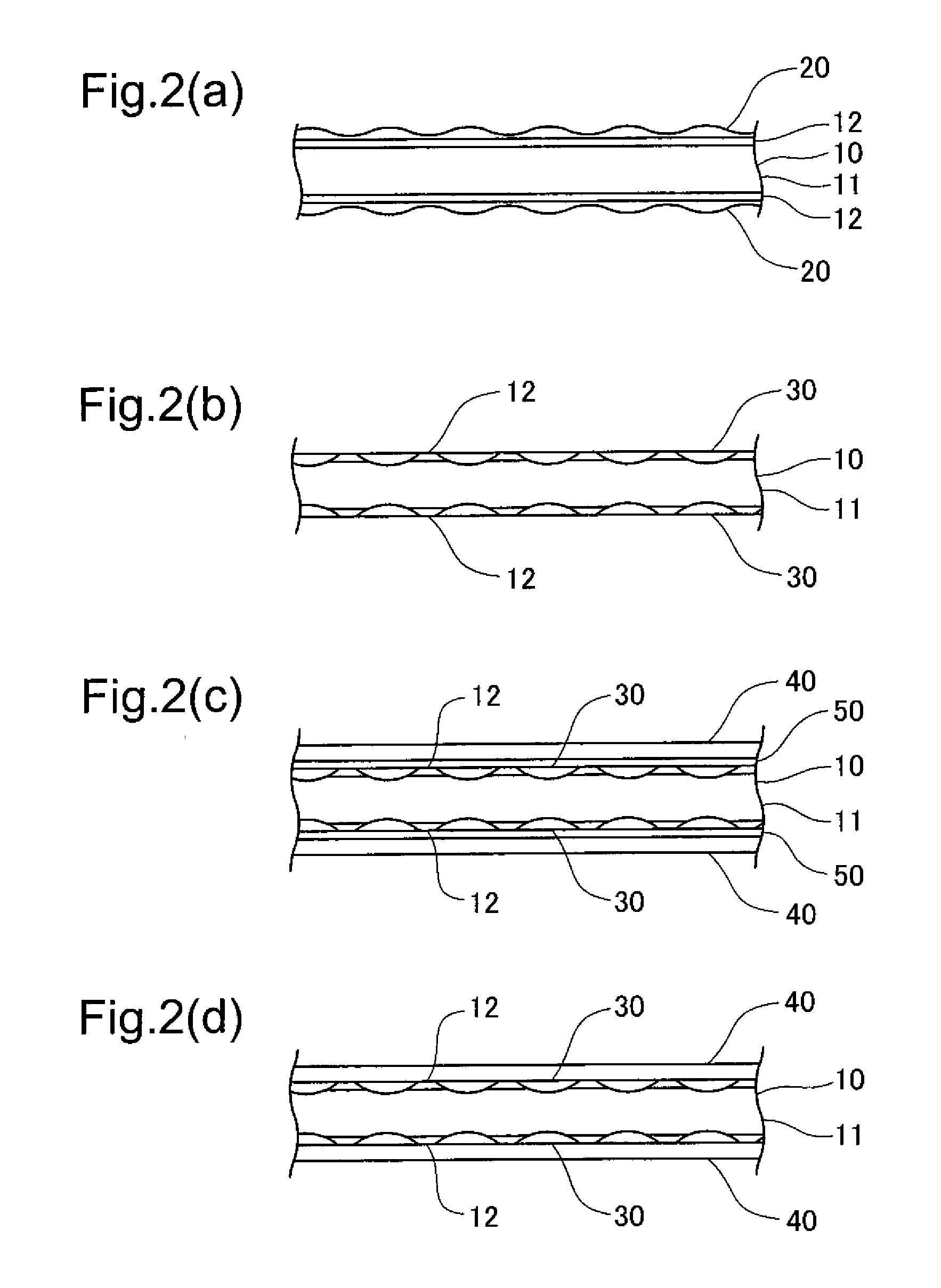Rare Metal Plating Of Titanium Components
a technology of titanium components and rare metals, applied in the direction of superimposed coating process, sustainable manufacturing/processing, final product manufacturing, etc., can solve the problems of difficult direct electrolytic gold plating of the surface and nickel evaporation from those sites, and achieve the effect of strong adhesion of the rare metal plating layer
- Summary
- Abstract
- Description
- Claims
- Application Information
AI Technical Summary
Benefits of technology
Problems solved by technology
Method used
Image
Examples
embodiment 1
C1. Alternative Embodiment 1
[0040]In the preceding embodiment, the plate-shaped component 10 is subjected to gold plating. However, the material used to plate the surfaces of components is not limited to gold (Au), and it would be acceptable to employ other rare metals such as silver (Ag), platinum (Pt), palladium (Pd), rhodium (Rh), iridium (Ir), ruthenium (Ru), or osmium (Os).
embodiment 2
C2. Alternative Embodiment 2
[0041]In the preceding embodiment, the plate-shaped component 10 was made of JIS Class 1 titanium. However, the component for gold plating is not limited to this. Specifically, JIS Class 2 or Class 3 titanium could be used as the material of the component for gold plating. Besides pure titanium as specified by JIS, it would also be possible to use titanium alloys containing greater amounts of other metals.
embodiment 3
C3. Alternative Embodiment 3
[0042]In the preceding embodiment, the titanium carbide is produced through a reaction of carbon present in the rolling mill lubricant coating the surfaces of the plate-shaped component 10 with the titanium of the plate-shaped component 10. However, the carbon used to form the titanium carbide could be supplied by some other method. For example, a suitable carbon-containing material could be applied onto the surfaces of the plate-shaped component 10 prior to heat treatment.
PUM
| Property | Measurement | Unit |
|---|---|---|
| temperature | aaaaa | aaaaa |
| temperature | aaaaa | aaaaa |
| temperature | aaaaa | aaaaa |
Abstract
Description
Claims
Application Information
 Login to View More
Login to View More - R&D
- Intellectual Property
- Life Sciences
- Materials
- Tech Scout
- Unparalleled Data Quality
- Higher Quality Content
- 60% Fewer Hallucinations
Browse by: Latest US Patents, China's latest patents, Technical Efficacy Thesaurus, Application Domain, Technology Topic, Popular Technical Reports.
© 2025 PatSnap. All rights reserved.Legal|Privacy policy|Modern Slavery Act Transparency Statement|Sitemap|About US| Contact US: help@patsnap.com



